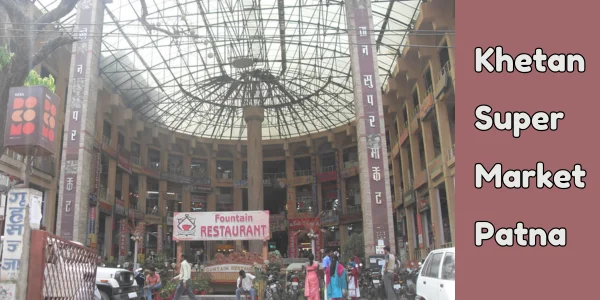Uttarakhand, often referred to as the “Land of Gods,” is not only known for its breathtaking landscapes and spiritual significance but also for its rich cultural heritage. The traditional dances of Uttarakhand form an integral part of its cultural fabric, reflecting the deep-rooted traditions, folklore, and daily lives of its people. These dances, performed during festivals, celebrations, and religious occasions, bring communities together and showcase the vibrant heritage of the region.
Here’s a look at some of the most significant traditional dances of Uttarakhand:
1. Chholiya Dance – The Martial Dance of Kumaon
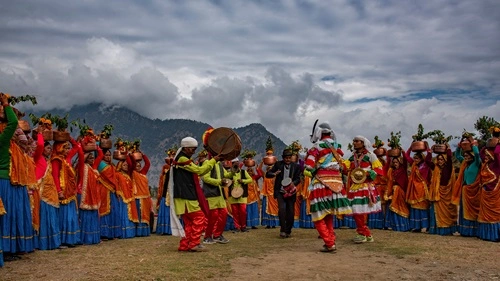
Chholiya is one of the most famous folk dances of Uttarakhand, originating from the Kumaon region. Known as the “martial dance,” it has been performed for over a thousand years, mainly during weddings and religious processions. Dancers, dressed in traditional warrior attire and wielding swords and shields, move energetically to the beats of traditional drums and wind instruments like the Ransingha (a type of trumpet).
Significance:
Chholiya dance was historically performed to ward off evil spirits and ensure a prosperous marriage. Today, it is an essential part of Kumaoni weddings, adding grandeur to the celebrations.
2. Jhora – The Dance of Unity and Celebration
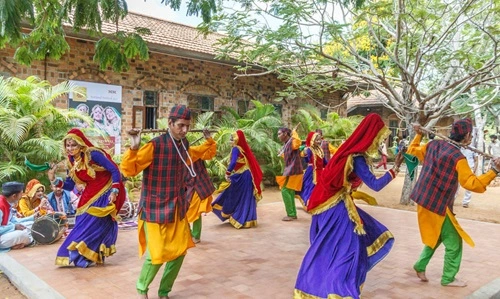
Jhora is a popular folk dance of the Kumaon region, performed in a circular formation with men and women holding hands and swaying to rhythmic beats. Unlike Chholiya, Jhora is a social dance that emphasizes communal harmony and joy. It is performed during Holi, weddings, and other festive occasions.
Significance:
Jhora represents unity and togetherness, breaking societal barriers of caste and class. The dance movements are simple yet graceful, creating a mesmerizing atmosphere.
3. Langvir Nritya – The Acrobatic Dance of the Hills
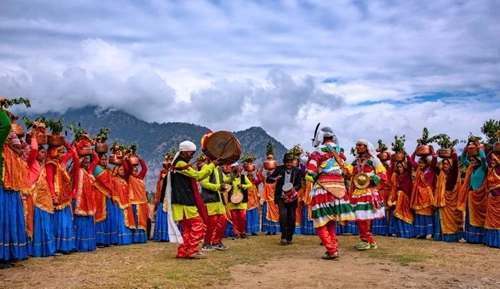
Langvir Nritya is one of the most unique dance forms of Uttarakhand, requiring exceptional agility and strength. This dance is exclusively performed by men, who climb a tall bamboo pole and execute gymnastic feats while balancing at the top.
Significance:
Rooted in religious traditions, Langvir Nritya is often performed during fairs and festivals, especially in temples. It showcases the physical prowess and endurance of the dancers, leaving the audience spellbound.
4. Barada Nati – The Rhythmic Celebration of Jaunsar-Bawar
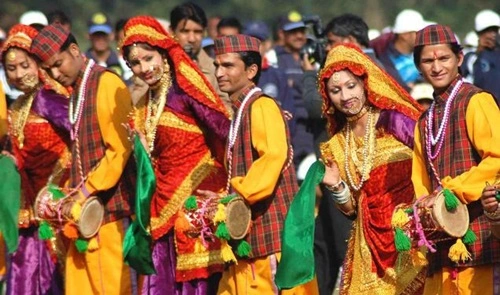
Barada Nati is a famous folk dance of the Jaunsar-Bawar region in the Garhwal division. It is performed during festivals and special occasions, with dancers dressed in colorful traditional attire. The movements are slow yet graceful, synchronized with the beats of drums and folk instruments.
Significance:
This dance reflects the cultural essence of the Jaunsari people, preserving their customs and traditions. The dance steps are performed in unison, symbolizing harmony and cultural pride.
5. Pandav Nritya – The Mythological Dance Drama
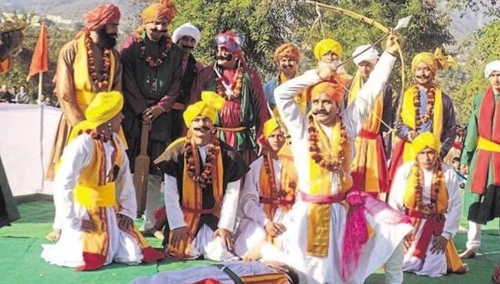
Pandav Nritya is a religious and dramatic folk dance depicting episodes from the Mahabharata, particularly the life and adventures of the Pandavas. This dance is prevalent in the Garhwal region and is performed in temples and villages during special occasions.
Significance:
This dance is more than just entertainment; it is considered a spiritual experience. Villagers believe that participating in or witnessing Pandav Nritya brings divine blessings. The performers wear elaborate costumes and enact mythological stories, making it a captivating experience.
6. Bhotiya Dance – A Ritualistic Dance of the Tibetan Community
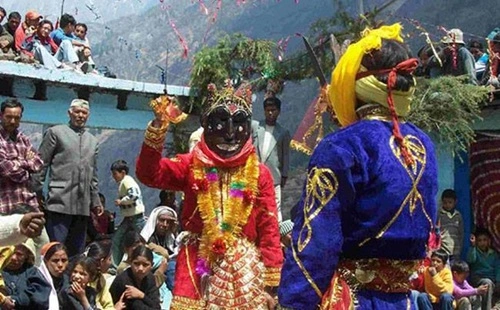
The Bhotiya dance is performed by the Bhotiya community, who inhabit the high-altitude regions of Uttarakhand, particularly near the Indo-Tibetan border. This dance has a ritualistic significance and is often performed to appease deities and spirits.
Significance:
It is believed that the dance helps in liberating the souls of the deceased and guiding them towards salvation. The movements are slow and symbolic, often resembling a trance-like state.
7. Ramman – A UNESCO-Recognized Cultural Treasure
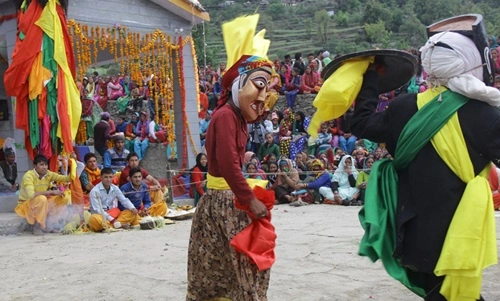
Ramman is not just a dance but a complete folk performance, combining dance, drama, and religious rituals. It is performed annually in the Saloor Dungra village of Chamoli district and has been recognized as an Intangible Cultural Heritage by UNESCO.
Significance:
Ramman celebrates local deities and heroes through storytelling, music, and dance. It serves as a means of passing down oral traditions and historical narratives to future generations.
8. Tandi Dance – A Dance of Love and Loss
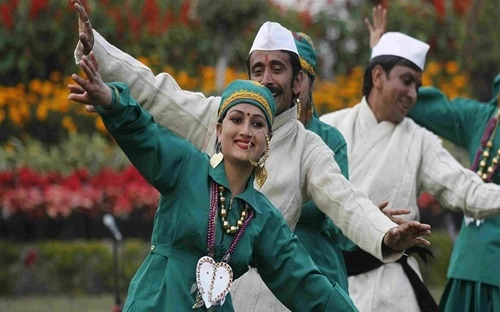
Tandi dance is a sorrowful yet poetic folk dance performed in the Garhwal region. It is traditionally performed by widows or women who have lost their loved ones. The slow, melancholic movements depict grief and longing.
Significance:
Unlike other celebratory dances, Tandi carries deep emotional weight, portraying the pain of separation and loss. It reflects the hardships faced by mountain communities and their resilience in the face of adversity.
9. Chapeli Dance – The Romantic Dance of Garhwal
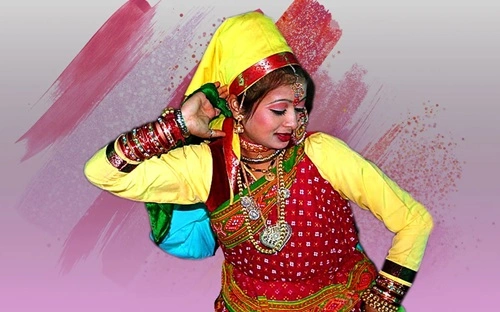
Chapeli is a lively and playful dance form performed during weddings and festive occasions in the Garhwal region. It is a duet dance, where men and women dance together in a flirtatious manner, expressing love and admiration.
Significance:
Chapeli captures the essence of romance and joy, making it a highlight of wedding celebrations. The dancers wear vibrant traditional attire, adding to the visual appeal of the performance.
Conclusion
The traditional dances of Uttarakhand are more than just artistic expressions; they are a living testament to the state’s rich cultural heritage and history. Each dance form has a unique story to tell, reflecting the beliefs, traditions, and social values of the people. From the warrior-like vigor of Chholiya to the spiritual depth of Pandav Nritya, these dances continue to thrive, preserving the essence of Uttarakhand’s identity.
As modernization sweeps through the state, efforts are being made to preserve these cultural treasures through festivals, government initiatives, and community-driven programs. These folk dances remain an integral part of the state’s vibrant cultural landscape, ensuring that Uttarakhand’s heritage continues to flourish for generations to come.

